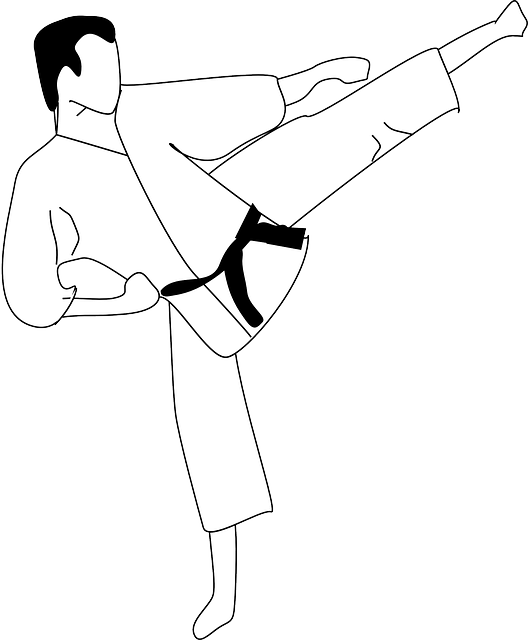The article examines the historical and cultural significance of the karate gi, a traditional garb that transcends mere attire to represent the martial art's origins in Okinawa, its philosophical values, and the discipline it signifies. Comprising a jacket, trousers, belt, and often a headband, the gi's traditional materials—cotton or hemp—offer both movement freedom and durability. The white color of the gi symbolizes purity and humility, with each article of clothing reflecting the wearer's rank and dedication to karate. Historically, the gi evolved from functional attire used by Japanese martial artists into a universally adaptable training suit that respects the diverse styles and schools within karate, moving away from the impractical kimono. The modern design of the karate uniform, known as keikogi, has been influenced by the judogi's functional characteristics, ensuring ease of movement and adaptability for various techniques. As karate gained international acclaim, the gi became a global emblem of the martial art, encapsulating its traditional values and simplicity. Today, while the karate uniform continues to evolve with new fabrics and styles, its name remains a testament to the enduring legacy and profound influence of karate across the world.
Exploring the rich tapestry of martial arts, one encounters a myriad of disciplines, each with its own tradition-steeped attire. Among these, the karate suit stands out for its simplicity and functionality, embodying the essence of respect and discipline inherent in the practice. This article delves into the karate uniform name and its significance, tracing the evolution of this garb from its origins to the present day. Join us as we uncover the history behind the karate gi and understand how it has become an integral part of the martial art’s identity.
- Unveiling the Essence of Tradition: The Karate Uniform Name and Its Significance
- The Evolution of the Karate Gi: A Historical Perspective on the Uniform's Origins and Development
Unveiling the Essence of Tradition: The Karate Uniform Name and Its Significance

Embarking on an exploration of the martial art form known as karate, one cannot help but be intrigued by the rich tapestry of tradition that it encompasses. A pivotal element within this framework is the attire donned by practitioners—the karate uniform. Often referred to colloquially as a gi, this garment is steeped in significance, reflecting both the discipline’s origins and its philosophical underpinnings. The term ‘karate uniform name’ encapsulates the precise designation for this attire, which varies slightly from other martial arts’ garb to honor the unique heritage of karate.
The traditional karate gi consists of a jacket, trousers, belt (obi), and sometimes a headband (kendama). The fabric is traditionally cotton or hemp, allowing for ease of movement and durability during practice and sparring. The white color serves as a blank canvas, symbolizing purity, humility, and the readiness to receive knowledge. Each element of the uniform is designed with purpose; the belt system, for instance, indicates the wearer’s rank and level of skill within the discipline. The karate uniform name, therefore, is more than a label—it represents a commitment to the martial art’s principles, a nod to its Okinawan origins, and a statement of the practitioner’s dedication to the path of karate.
The Evolution of the Karate Gi: A Historical Perspective on the Uniform's Origins and Development

The origins of the karate gi, or training suit, are deeply rooted in the history and culture of Japan. Initially, martial artists practiced in simple cotton or hemp garments that were functional for the discipline’s physical demands. These early attire laid the groundwork for what would later become the standardized karate uniform recognized today. Over time, as martial arts gained popularity beyond their native lands, the need arose for a universally accepted training outfit that could be used across different styles and schools. The traditional Japanese kimono was too ornate and restrictive for the rigorous movements of karate, prompting the evolution towards a more functional design.
The transformation from the kimono to the modern karate gi, which is also known as a judogi in its full-length form, was influenced by Judo, another Japanese martial art. The judogi’s design allowed for ease of movement and could be easily grabbed during practice, making it ideal for grappling techniques. As karate spread globally, the gi became a symbol of the discipline and respect for the martial art. It became standardized in its cut and color to reflect the traditional values of humility and simplicity inherent in martial arts training. Today, the karate uniform, or ‘keikogi’ as it is often referred to within the context of practice, continues to evolve subtly, with variations in weave, weight, and style emerging to suit different climates and training needs while maintaining the essential characteristics that have defined it for centuries. The karate uniform name has become a synonym for the discipline itself, a testament to its enduring legacy and the global impact of this quintessential martial art garment.
In concluding our exploration of the rich tapestry that is karate, a discipline steeped in tradition and respect for its roots, we’ve delved into the origins and evolution of the garment that practitioners don with pride—the karate uniform, or ‘keikogi.’ This article has shed light on the significance of the keikogi, not merely as a piece of training attire but as a symbol of the values inherent to karate practice. From its historical development to its current form, the keikogi serves as a testament to the enduring legacy and respect for tradition within this martial art. Whether in dojo or competition, the karate uniform name resonates with the discipline and honor that karateka uphold, making it an integral component of the karate experience.
